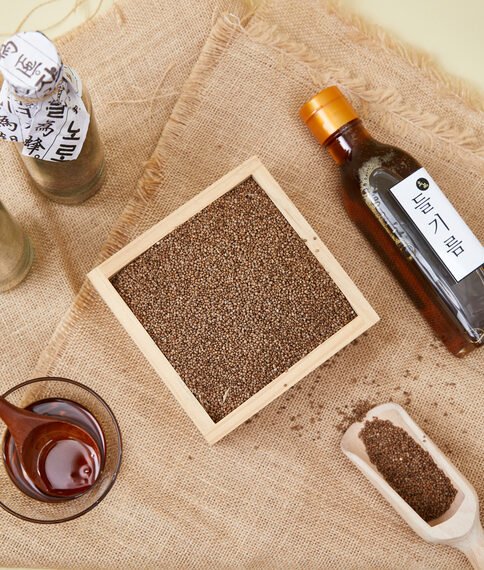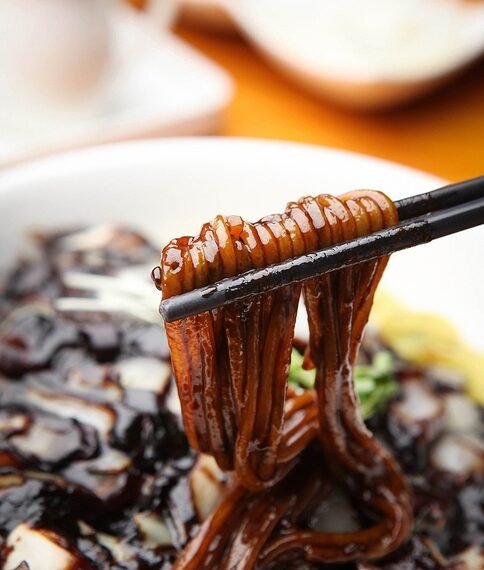Learn how to make a delicious vegetarian bibimbap with this easy-to-follow recipe. Bibimbap is a popular Korean rice dish that can be customized with your favorite toppings and flavors. Felicity Cloake’s recipe combines leftover side dishes, spicy gochujang, and sesame oil to create a flavorful and satisfying meal. Whether you’re vegetarian or simply looking for a meatless option, this bibimbap recipe is sure to impress. With step-by-step instructions and helpful tips, you’ll be able to prepare this dish with confidence. So gather your ingredients and get ready to enjoy a vibrant and delicious dish that will leave you craving more.
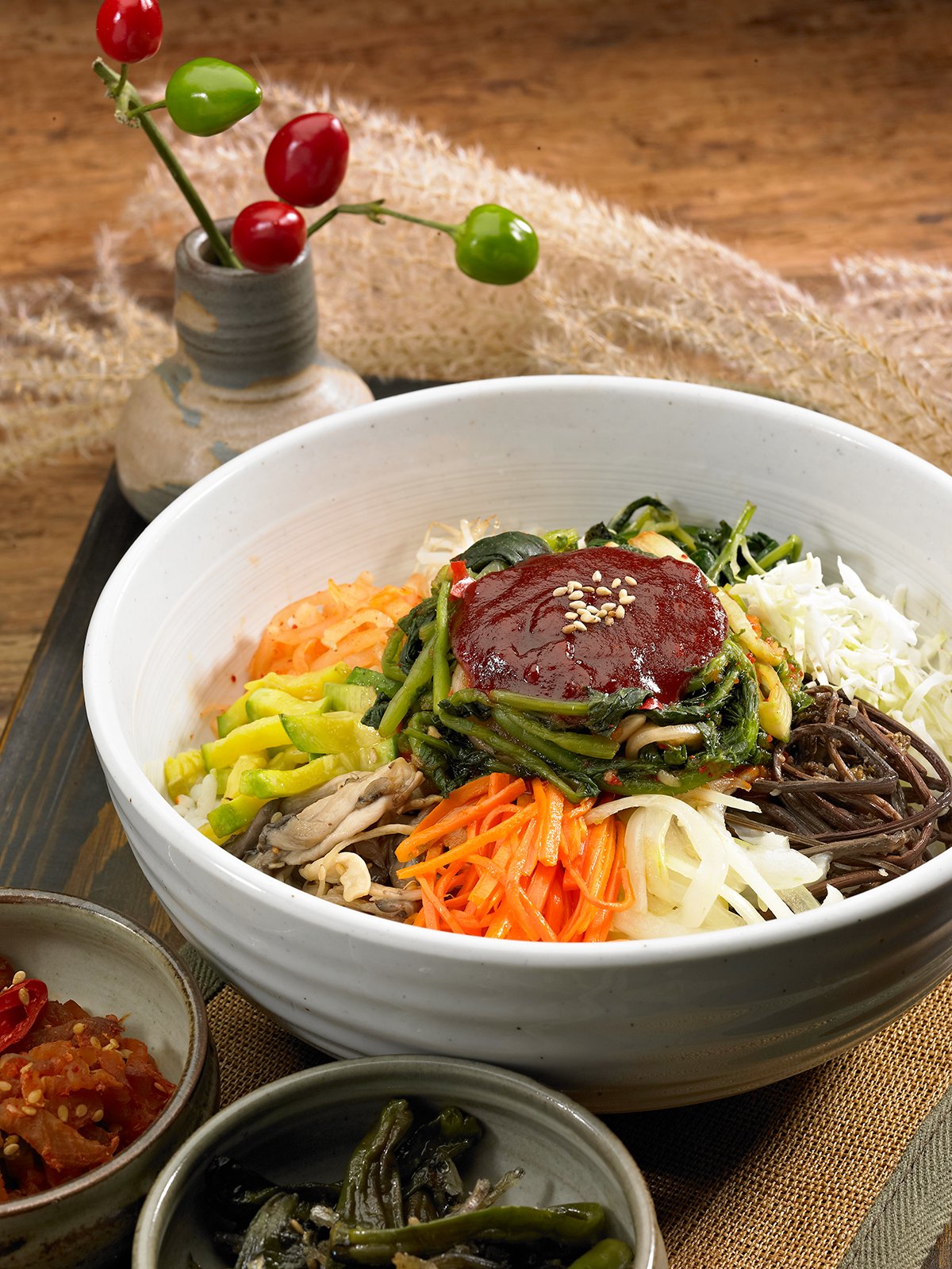
How to Make Vegetarian Bibimbap
Bibimbap is a popular Korean rice dish that translates to “mixed rice.” It’s a versatile dish that allows for endless customization with toppings and flavors. In this article, we’ll guide you through the process of making a delicious vegetarian bibimbap that you can enjoy right at home. So gather your ingredients and let’s get started!
Ingredients
- 400g short-grain rice, or 4 portions of cooked rice
- 1 medium carrot
- 4 tbsp neutral oil
- 200g fresh shiitake mushrooms, or 6 dried shiitake mushrooms rehydrated in water and then sliced
- 1 garlic clove, peeled and crushed
- 1 tbsp soy sauce
- 4 eggs (optional)
- Kimchi, to serve (vegan if necessary)
- Toasted sesame oil, to serve
- For the spinach:
- 300g spinach (frozen and defrosted is fine)
- 1 fat garlic clove, peeled and crushed
- 1 tsp toasted sesame oil
- 1 tsp soy sauce
- 1 tsp toasted sesame seeds
- For the beansprouts:
- 100g beansprouts
- ½ fat garlic clove, peeled and crushed
- 1 spring onion, trimmed and thinly sliced diagonally
- 1 tsp toasted sesame oil
- ½ tsp toasted sesame seeds
- Salt
- For the sauce:
- 4 tbsp gochujang chilli paste
- 1 tbsp sesame oil
- ½ tsp sugar (optional)
- 1 garlic clove, peeled and crushed
Preparation
- Prep: 20 min
- Cook: 40 min
- Serves: 4
Step 1: Rinse the Rice
If you’re cooking the rice from scratch, it’s best to rinse it before cooking. Place the rice in a sieve and rinse it with cold water, rubbing the grains together until the water runs clear. Let the rice drain and dry for 20 minutes while you prepare the vegetables. Alternatively, you can use pre-cooked short-grain rice.

Step 2: Prep the Vegetables
Prepare the Spinach
If using fresh spinach, blanch it in boiling water for a minute, then remove it with a slotted spoon, rinse it under cold water, and squeeze out the excess liquid. If using defrosted spinach, simply squeeze it dry. Chop the spinach and mix it with the crushed garlic, sesame oil, soy sauce, and sesame seeds. Season to taste and set aside.
Prepare the Beansprouts
Boil the beansprouts in the same water as the spinach for four to five minutes until tender. Drain and refresh them under cold water. Mix the beansprouts with garlic, spring onions, sesame oil, sesame seeds, and a pinch of salt. Set aside with the spinach.
Prepare the Carrot and Mushrooms
Peel the carrot and cut it into matchsticks. Tear the mushrooms into bite-size pieces. In a frying pan, heat a tablespoon of oil and stir-fry the carrots with a pinch of salt for three to five minutes until softened. Transfer the carrots to a small bowl. Add another tablespoon of oil to the pan and repeat the process with the mushrooms. Stir in the crushed garlic and soy sauce and sauté briefly. Transfer the mushrooms to another small bowl.
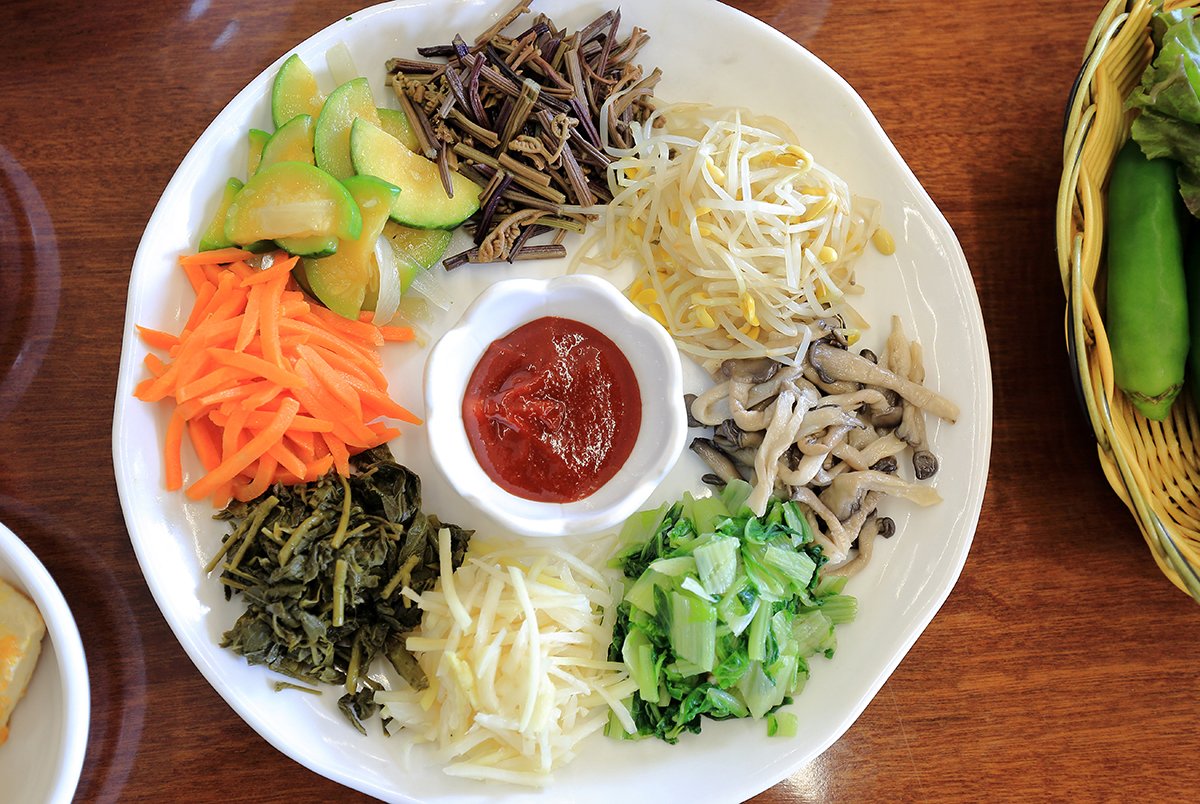
Step 3: Make the Sauce
In a small bowl, mix together the gochujang chili paste, sesame oil, sugar (if using), and crushed garlic. Add a tablespoon of cold water to achieve the desired drizzling consistency. Taste and adjust the seasoning as necessary.
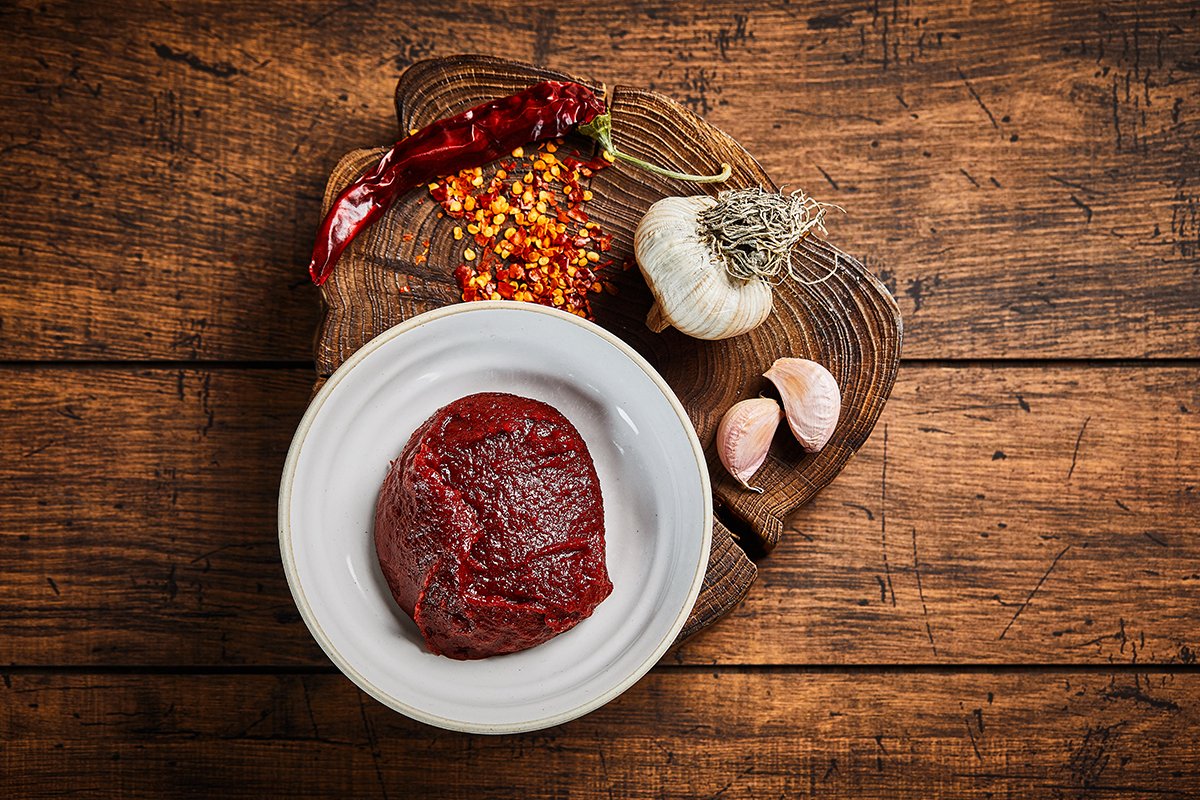
Step 4: Cook the Rice
If you’re cooking the rice from scratch, place the rinsed rice in a saucepan with 275ml of cold water. Let it sit for five minutes, then cover and bring it to a boil. Reduce the heat and simmer gently for 15 minutes. Turn off the heat and let it sit for another 10 minutes. Fluff up the rice gently with a flat spatula.
Step 5: Fry the Eggs (Optional)
If desired, heat two tablespoons of oil in a frying pan and fry the eggs to your liking. Set aside.
Step 6: Assemble the Bibimbap
Brush the pan with sesame oil and turn the heat to high. Add the cooked rice to the pan and let it sit for a couple of minutes until it starts to toast and crisp on the bottom. Divide the rice between four warmed bowls. Top each bowl with spinach, beansprouts, carrots, mushrooms, kimchi, sauce, eggs (if using), and a drizzle of sesame oil.
Step 7: Serve and Enjoy!
Take the bowls of bibimbap to the table and encourage your guests to gently mix all the ingredients together before eating. Put out some extra kimchi and sauce for those who like it spicier.
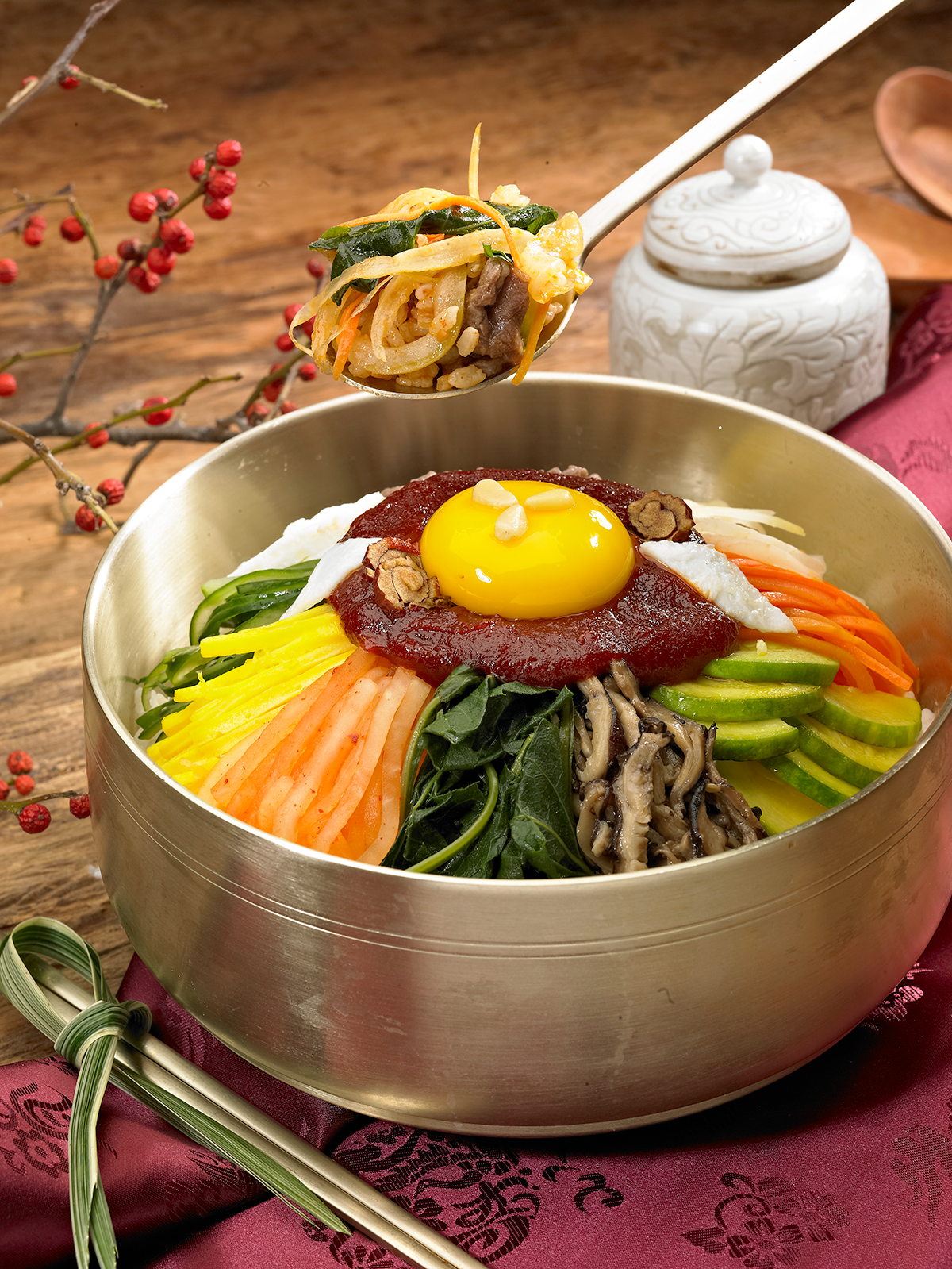
Tips and Variations
Meaty, Vegetarian, or Vegan?
One of the great things about bibimbap is its versatility. You can prepare it in advance and leave out or substitute toppings to suit your preferences. While traditional versions of bibimbap include meat, this recipe is vegetarian. However, you can leave out the egg or use tofu as a vegan alternative.
A Note on the Rice
Rinsing the rice before cooking helps remove excess starch and results in fluffier rice. If using pre-cooked rice, you can skip this step. Short-grain rice is the best choice for bibimbap, but if you can’t find it, you can use any short-grain rice available to you.
Now that you have all the steps and tips to make a delicious vegetarian bibimbap, it’s time to gather your ingredients and get cooking! Enjoy this flavorful and versatile Korean rice dish right in the comfort of your home.


